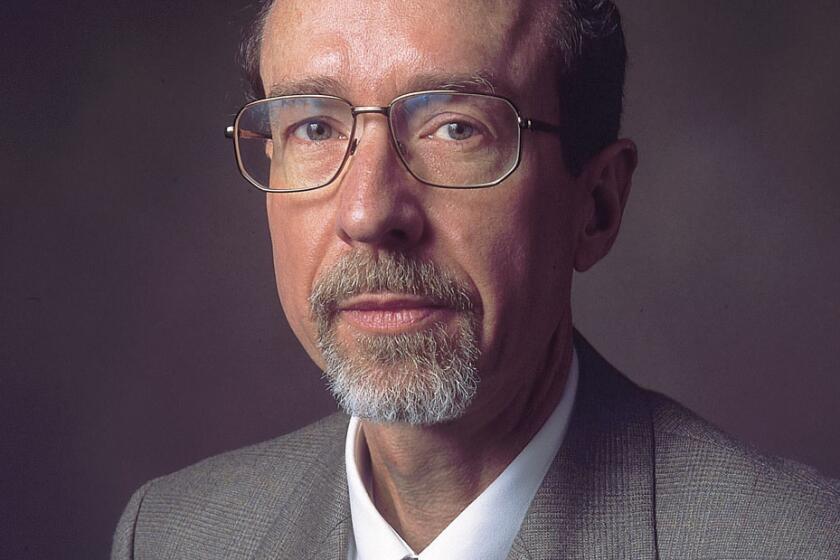Up to 1.5 Million Russians Have HIV, Government Says
While the number of AIDS deaths is still low, an epidemic of HIV infection is raging in Russia, with up to 1.5 million Russians carrying the virus, the country’s top expert on the disease said Thursday.
Vadim V. Pokrovsky, head of the Health Ministry’s AIDS Prevention and Treatment Center, made the statement at a news conference called to promote a battle against HIV/AIDS in Russian prisons, where the disease readily spreads and is then transmitted to the broader society as inmates are released.
Russia has 235,000 registered HIV/AIDS cases, but the actual number is estimated at 700,000 to 1.5 million, Pokrovsky said. This includes 37,000 inmates who are confirmed to be infected. The totals are up from just 442 registered cases in 1990 and 1,080 registered cases in 1995.
An all-star cast of international health organizations appeared at the press event, which was focused on a new Russian-language health manual designed for use by prison doctors. But in an indication of why the epidemic rages on, Pokrovsky said in response to a question near the end of the news conference that the book is full of nice ideals but is detached from reality.
“The book reflects the best practices and the best intentions,” Pokrovsky said. “Of course, the book should be adopted taking into account the economic situation in this country. The book reflects the ideal situation. It doesn’t take into account the real situation. The financial situation today does not allow the implementation of these ideas into Russian reality.”
The news conference was attended by representatives of the World Health Organization, Medecins Sans Frontieres, Penal Reform International and Moscow-based AIDS Foundation East-West. But no one at the news conference gave any strong indication that key preventive measures recommended in the manual would be acted upon.
The WHO book paints a bleak picture of problems in Russian prisons and many other penal institutions around the world that contribute to the spread of AIDS.
A Russian prisoner survey cited in the manual found that of 1,087 respondents, 20% said they had injected drugs while in prison, and of that group 64% used shared equipment.
Another Russian survey found that of 1,100 male prisoners aged 18 to 80 who had been imprisoned for 1.5 to 10 years, more than 85% reported sexual contacts while incarcerated.
The manual suggests three ways to limit the transmission of HIV from drug use: providing sterile needles, providing bleach so prisoners can sterilize needles and providing methadone maintenance treatment to addicts.
Russian prison authorities generally say that given overcrowded conditions and the susceptibility of poorly paid guards to bribery, keeping prisons drug-free is an impossible task.
But many critics of needle-exchange programs condemn them as condoning drug use. Bleach is considered dangerous because it can be used as a weapon against other prisoners or guards. And methadone generally is banned in Russia.
As for sexual transmission of HIV, the manual notes that “many prison authorities in Western Europe made condoms, together with lubricant, readily available to prisoners.”
“In a number of surveys undertaken in Europe, the proportion of prison systems that reported that they had made condoms available rose from 53% in 1989 to 75% in 1992 and 81% in 1997,” it says.
The book quotes a statement by the Joint United Nations Program on HIV/AIDS that it is “vital that condoms, together with lubricant, should be readily available to prisoners.”
“Unfortunately, there still exists a strong current of denial in many places about male-to-male sex -- especially in prison -- and a corresponding refusal to do anything which might be seen as condoning it,” the statement continues. “These attitudes will have to change if societies want to see the rate of HIV infection -- inside prison and outside of it -- decrease.”
Meanwhile, drugs for proper treatment of HIV/AIDS cost about $7,000 annually per patient, but money is available to provide treatment to only 1% of those known to be infected, Pokrovsky said.
While HIV/AIDS in Russia has until now been spread primarily through intravenous drug use, its spread through heterosexual relations is growing rapidly, he said. And because widespread infection is so new in Russia, the epidemic is still just beginning to explode, he added.
“Today we can say, ‘No one dies of AIDS,’ ” he said.
“The snowball will get larger. The major problems will be in the future.... We should act now.”
More to Read
Sign up for Essential California
The most important California stories and recommendations in your inbox every morning.
You may occasionally receive promotional content from the Los Angeles Times.










